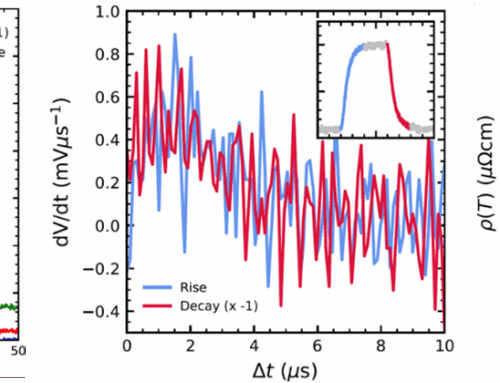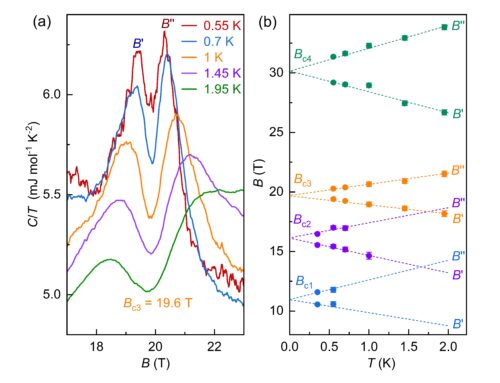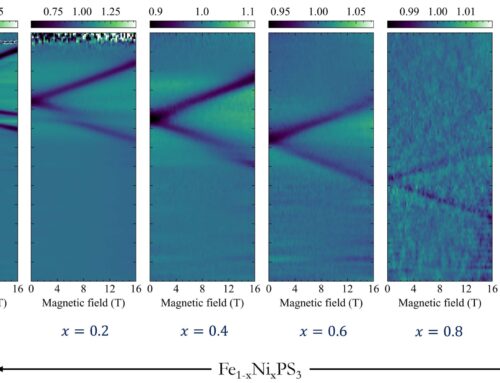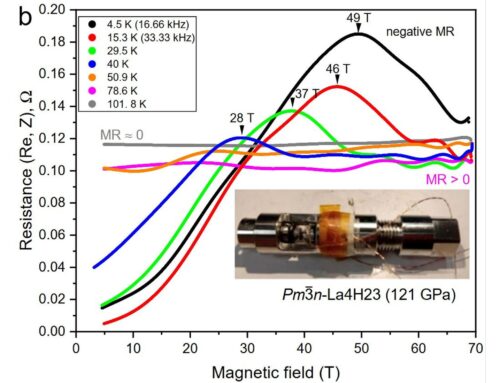Raj Pandya, University of Warwick, UK, Chris Howard, University College London, UK, Peter Christianen, HFML-FELIX Nijmegen.
For the first time, researchers have demonstrated that phosphorene nanoribbons – thin pieces of black phosphorus, only a few nanometers wide (figure 1, bottom) – exhibit both magnetic and semiconducting properties at room temperature. This makes phosphorene nanoribbons a unique class of materials that challenges conventional views on magnetic semiconductors, and could provide a stepping stone to unlocking new quantum technologies.
Scientists have suspected that low-dimensional phosphorene nanoribbons might exhibit unique magnetic and semiconducting properties, but proving this has been difficult. Using a variety of experimental techniques in an applied magnetic field, such as
ultrafast magneto-optical spectroscopy, electron paramagnetic resonance, and magnetic birefringence, we were able to demonstrate the remarkable magnetic behavior of phosphorene nanoribbons at room temperature and show how these magnetic properties can interact with light. Under relatively weak magnetic fields (below 1 T), the phosphorene nanoribbons surprisingly stand at attention in solution almost like iron filings, arranging themselves around a magnet (figure 2). Furthermore, when deposited in thin films they can display macroscopic magnetic behavior akin only to that of classic magnetic metals such as iron and nickel.
Most excitingly, we discovered that in addition to these magnetic properties, phosphorene nanoribbons host excited states on the
magnetic edge of the nanoribbon, where it interacts with atomic vibrations (phonons) that are normally not allowed by the material’s bulk symmetries. This unusual interaction allows the nanoribbons to uniquely couple magnetic, optical, and vibrational properties on its one-dimensional edge (figure 1, top). These findings are particularly significant as they mark the first experimental validation of the predicted, but difficult to observe, magnetic properties of phosphorene nanoribbons, without requiring low temperatures or doping.
What stands out the most about this research is its potential to influence multiple avenues of science and technology. This research could enable new routes to spintronic devices, which use electron spin instead of charge to enable novel computing technologies such as scalable fabrication for quantum devices, flexible electronics, and next generation transistors.
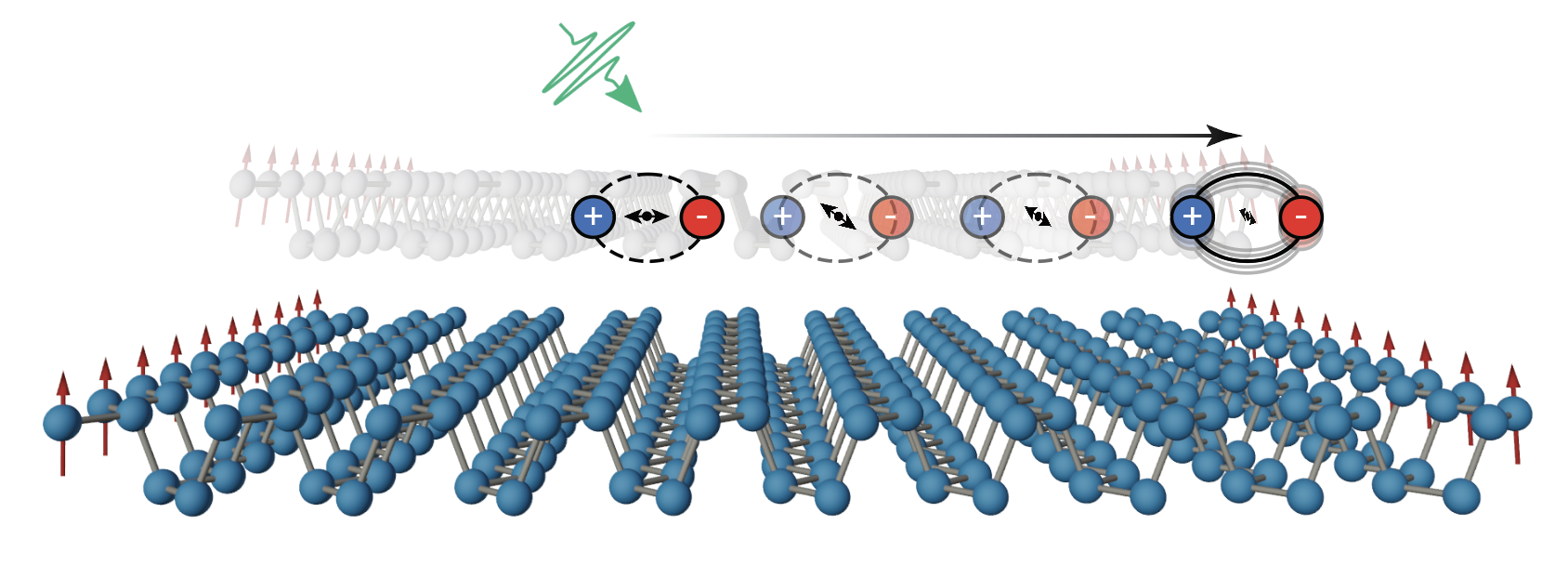
Figure 1: (Bottom) Crystal structure of phosphorene nanoribbons with zigzag-aligned edges along their long axis that host magnetic moments (red arrows). (Top) Schematic of the photoexcited dipole dynamics, where the excited state is initially polarized along
the nanoribbon short axis and, on sub-1-ps timescales, relaxes to a dipole polarized along the long axis with significant density along the ribbon edge.
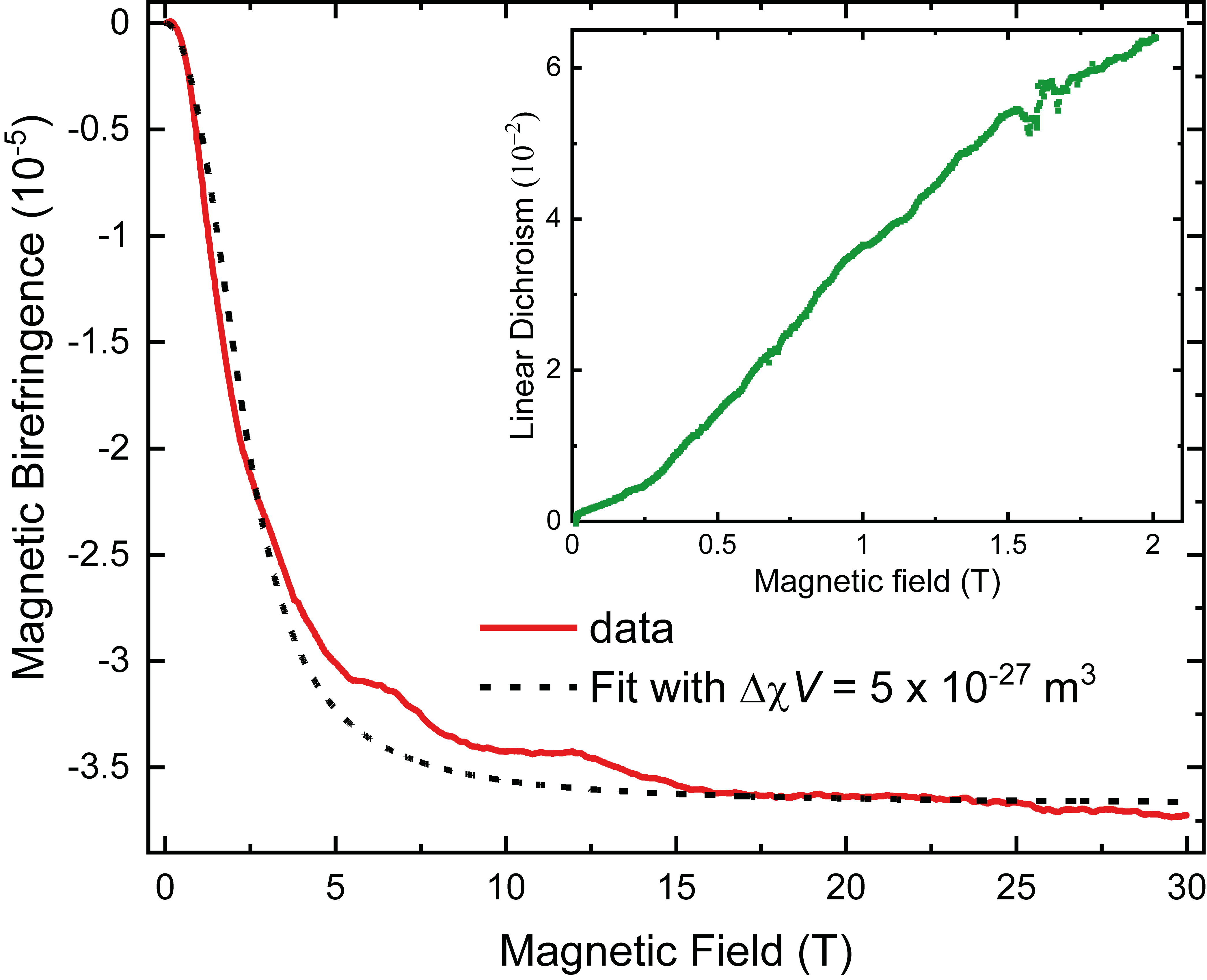
Figure 2: Alignment of phosphorene nanoribbons in solution measured using magnetic field-induced linear birefringence up to 30 T shows saturation at 10 T. Combined with the magnetic linear dichroism (inset), these results indicate that phosphorene nanoribbons align with their short axis along the field direction.
Magnetically and optically active edges in phosphorene nanoribbons, A. Ashoka, A. J. Clancy, N. A. Panjwani, A. Cronin, L. Picco, E. S. Y. Aw, N. J. M. Popiel, A. G. Eaton, T. G. Parton, R. R. C. Shutt, S. Feldmann, R. Carey, T. J. Macdonald, C. Liu, M. E. Severijnen, S. Kleuskens, L. A. Muscarella, F. R. Fischer, H. Barbosa de Aguiar, R. H. Friend, J. Behrends, P. C. M. Christianen, C. A. Howard, and R. Pandya, Nature 639, 348 (2025).
https://www.nature.com/articles/s41586-024-08563-x
Contact: Raj.Pandya@warwick.ac.uk, c.howard@ucl.ac.uk, Peter.Christianen@ru.nl


